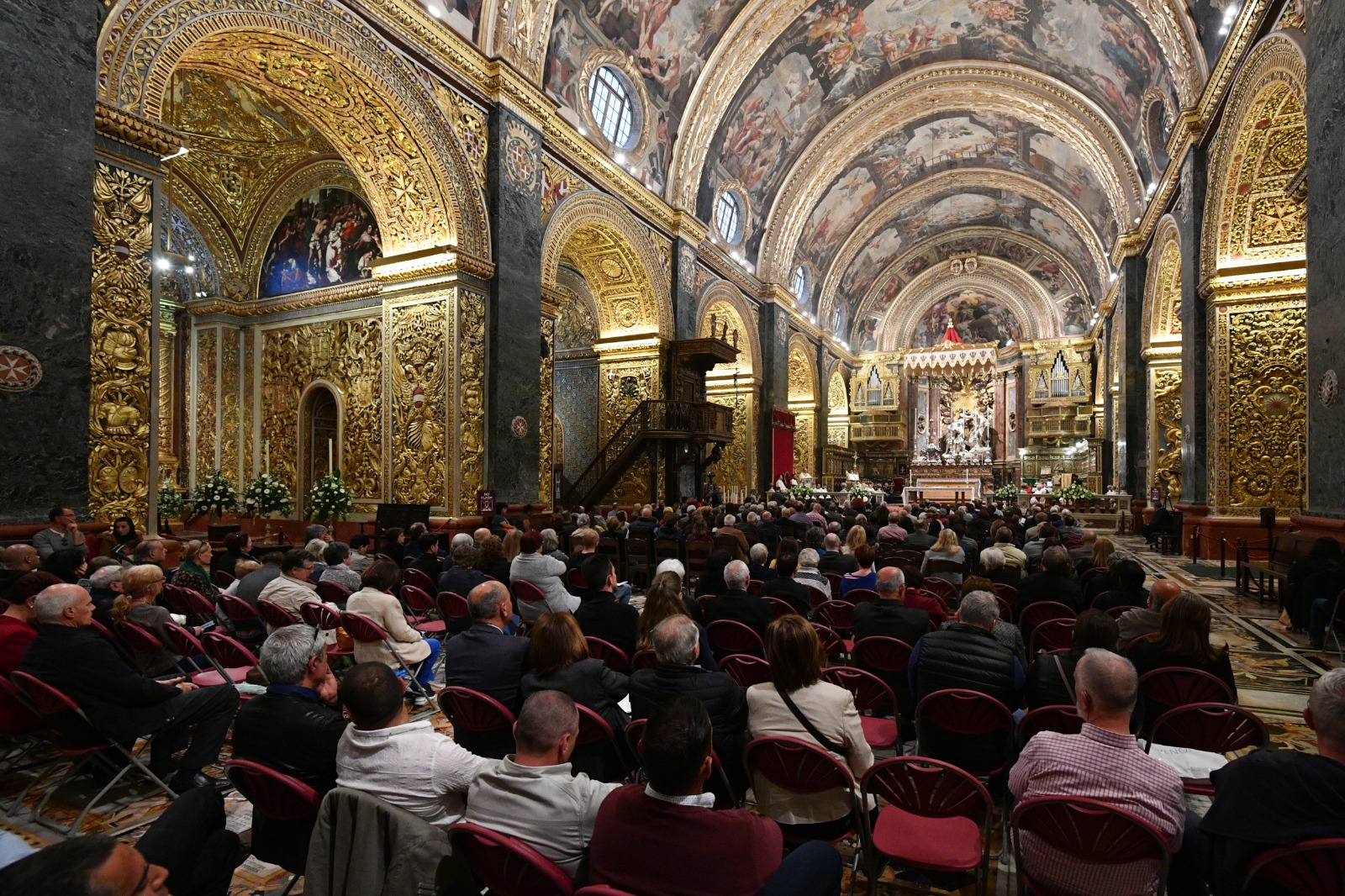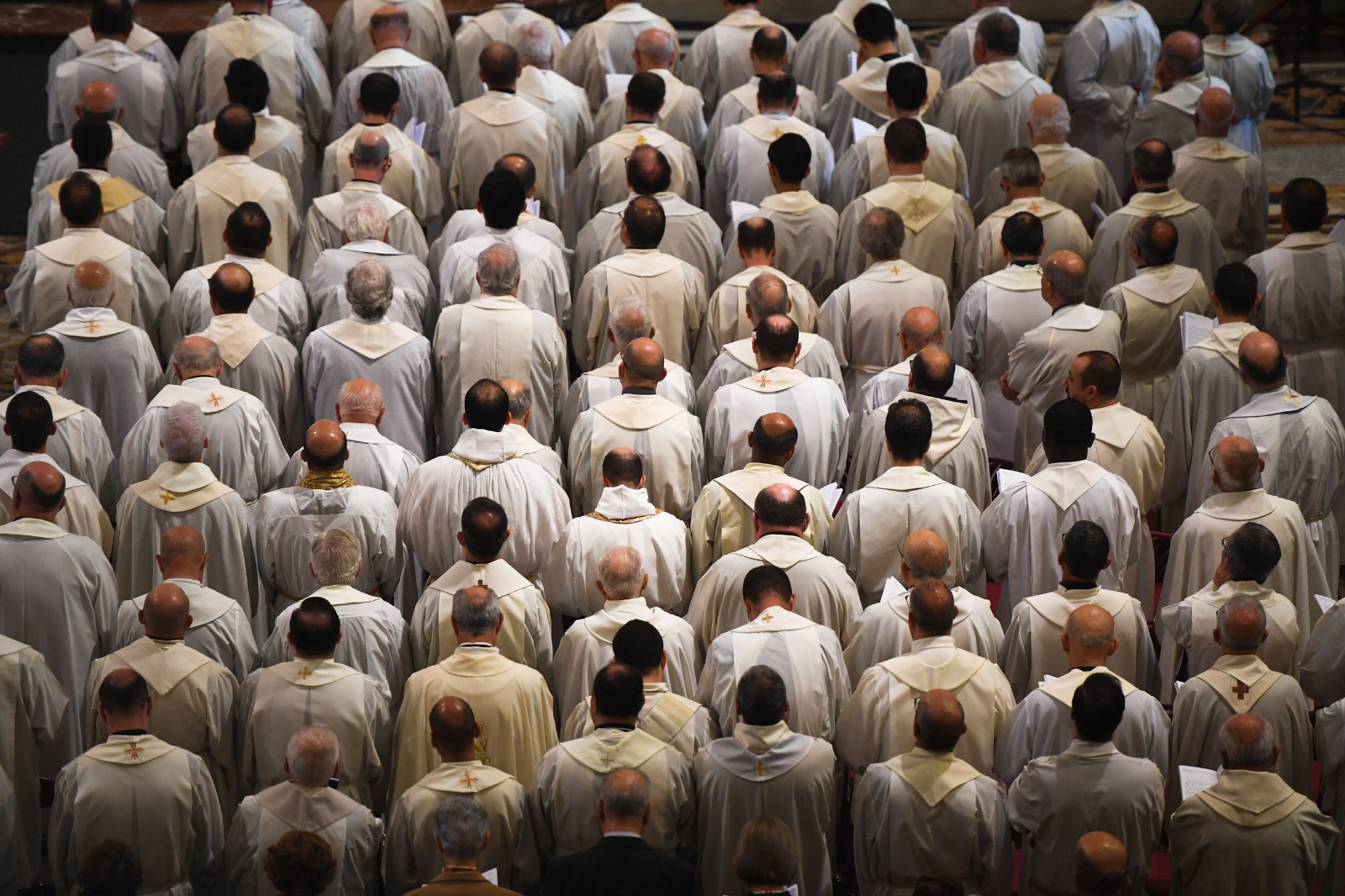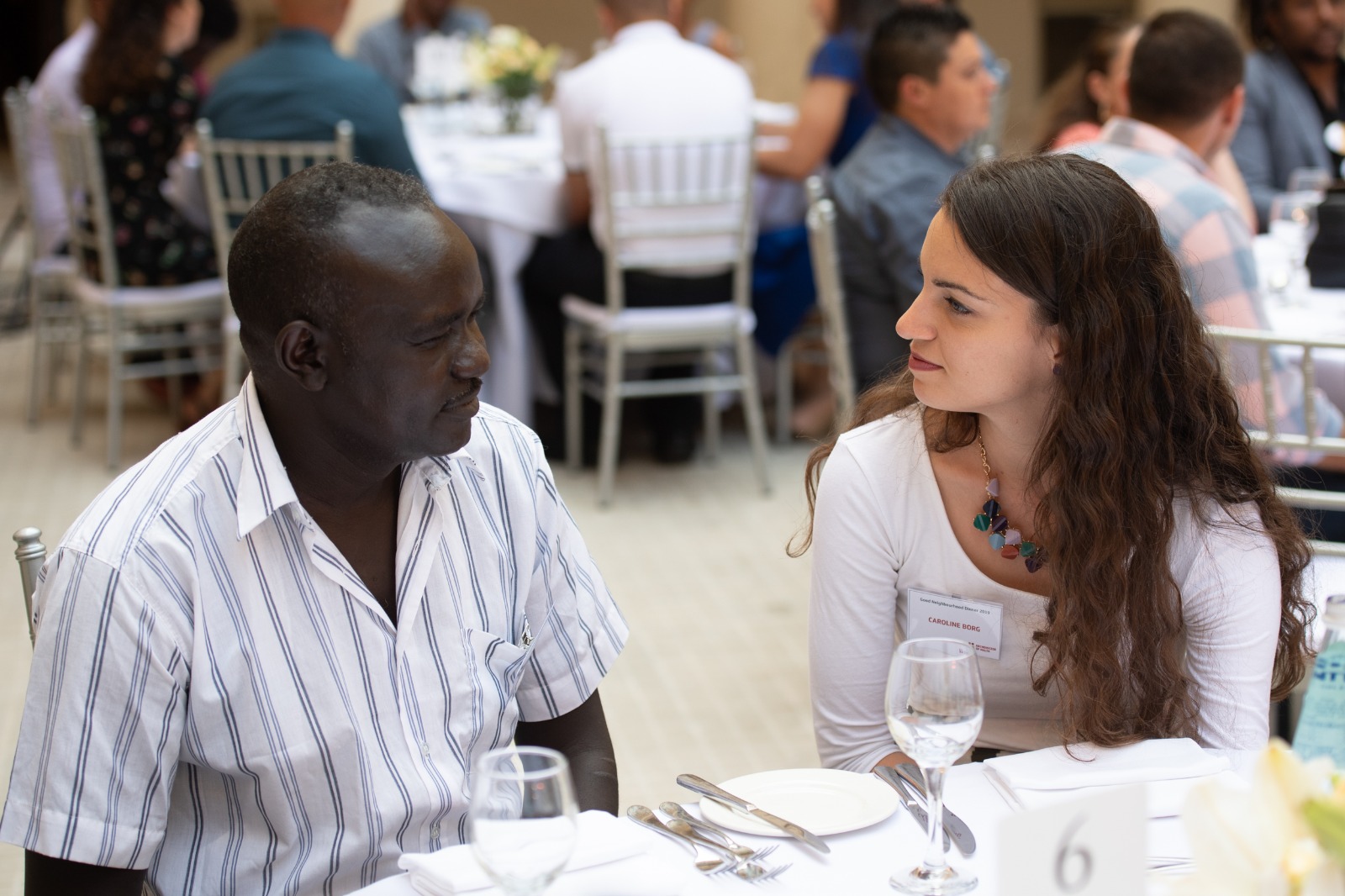That same hour they got up and returned to Jerusalem; and they found the eleven and their companions gathered together. (Lk 24:33)
As the People of God goes forth to proclaim the Good News through gestures of welcome, listening and accompaniment that bring reconciliation, seek formation and invite to contemplation, we become one body of Christ who, under the leadership of the one Head, the Archbishop, are empowered to serve according to our particular gifts.

Our one people brings together five key charisms, each according to the distinct roles played by its members.
The Church is herself the sacrament of God’s presence in the world. In her sacramental life she manifests most fully different aspects of God’s love for his People, and how God’s Holy People, the Church, his Bride, seeks to return the love of the Father poured upon her. That divine love lavishly poured out is indeed revealed in fullness in the God‑Man, the Christ, who not only saves, but is the Icon of the Father made flesh. Jesus the Christ, both Lamb and High Priest, remains with his Church till the end of times and his living presence, continues to be made visible in the priesthood of his People, and indeed, sacramentally, in the priesthood of the ordained.

The sacramental priesthood of the ordained is crucial to the Church, since in the sacraments, tangible signs of God’s presence among us are bestowed upon the world. Most centrally, the Church celebrates the Eucharist as the “source and summit” of the Christian life since, it not only brings the People of God together, it makes them “one” as God is Trinitarian koinonia. Together with the other sacraments of initiation, it builds the People of God as the one “body,” just as the sacraments of healing strengthen the Church that always depends on God’s mercy, in both body and soul. Marriage and Holy Orders, on the other hand, bridge the Church of today with that of tomorrow, not only by being a lifelong promise of fruitful love and selfless service, but also by being a symbol of the People’s ongoing faithfulness.
Still, the sacraments are not the only way how the Church reveals God’s love and gathers to pray: all our witness of the Good News, all our prayer, the lifeblood of the Church, is communal in Christ, insofar as we are truly open to the one Spirit who builds us up to become one, holy, catholic and apostolic.
The priestly presence in the Church’s authentic expression of faith, in particular in her life of prayer, reminds of the complementarity between Christ and his Bride, between the missions of the Son and the Holy Spirit, for the whole world. Thus, it seeks to recover and to purify the Church’s style of leadership, the language of its teachings, but also our People’s devotions as they emerged at different points in our history. It seeks to nurture new expressions of being Church‑in‑the‑world through the presence, words and prayer as they arise in People’s hearts today. It harmonises all expressions of reflection, prophecy and worship, the way multiple voices become one choir and multiple instruments one orchestra, praising God.
But it is also not about diversity for diversity’s sake, nor about traditions to satisfy our nostalgia; pruning is as necessary as watering and enriching the soil, for the tree to bear good fruit. And leading the Church’s prayer life also implies the discipline of standing for what truly nurtures the People’s devotion and not merely for doing what is deemed popular, likable or scores points.
The vows of poverty, chastity and obedience, in a lifestyle dedicated to prayer and service, symbolise with laser‑sharp clarity how the Church ought to prefigure the Kingdom. Every consecrated person is like the flame of a candle that burns with courage and persistence in pitch darkness. For the People of God, called to live their life in the world, they are also the living reminders that their true home is “in heaven”.
In turn, each religious congregation manifests a particular charism that the local ecclesia has not only inherited, but that needs to cultivate in the present times. Our local Church is blessed with many religious orders, male and female. Living these different charisms in faithfulness and with transparency manifests to the whole People of God what crucial aspects of the local Church’s ministry they must nurture for others: contemplation, teaching, healing, discerning spirits, serving the lowliest, spiritual accompaniment, educating our children.
The perseverance of living the same charisms with authenticity and creative adaptation over centuries, and therefore under shifting cultural challenges, also models to the Church of today how to inculturate the Gospel anew in Malta.
Becoming a Holy People of God who is missioned rests on two complementary centripetal and centrifugal movements. Both are primarily the vocation of the laity.
First is the daily, but hidden, ministry of the many Christian parents called to nurture the “domestic Church” over which they preside. This ministry is indispensable and, still, the most fragile especially in our challenging times. The whole ecclesial community must offer mutual support and accompaniment to parents as they raise their children in the faith. The Church is made of families, and motherhood and fatherhood are the most foundational ways in which we imitate in love, in the divine caritas that is mercy, the Fatherhood and Motherhood of God and the Church.

This foundational ministry of formation is also extended and sustained by those who help Christian parents most closely:
- the key ministry of catechists in parishes, and of teachers and other professionals especially in Catholic schools, whose primary purpose is to nurture in our children a Christian ethos;
- of youth ministers and family ministers, spiritual directors, pastoral counsellors and others who serve by accompanying families in different phases of their lifelong formation.
These ministries must be strengthened, since youth are the hope of the Church; guardians of her Tradition, but bold enough to adapt with most flexibility to the inculturation of the Gospel in our times. Especially in their relationship with grandparents, the Church is reborn with every generation, while remaining faithful to the apostolic kerygma.
The mission of lay ministers is also vibrant in the Church through their participation, by virtue of their baptism, in Christ’s priesthood. Many men and women, often in hiddenness, serve in their parish life through various liturgical and prayer ministries, in particular through the particular charism of their lay movement. Lay movements are a wellspring of life in the Church offering richness of diversity that spreads in many homes and to the peripheries, recalling the original desire of Christians who came together to break the Word and become friends in the Lord.
The laity also serve in works of charity: through parish social ministries offered to the community at large as well as in their professional services in Church institutions.
Ultimately, the service of the laity must remain oriented to the Church’s primary mission of witness in the world.
Christians do not separate themselves from the world through clothing or markings because their home and mission is the world itself which they are called to sanctify. Thus, what distinguishes the Christian in the world is always the sign of the Good News, the joy expressed as the mark of the Kingdom: God’s everlasting mercy towards the world. As Karl Rahner SJ put it, Christians in the world are “mystics” through everything they do; they infuse all their action with God’s mercy wherever they are.
Christians are professionals, artisans, labourers, homemakers and pensioners, and in their spheres of life, they are called to work not just with passion, creativity and integrity, but also in solidarity, always oriented to the wellbeing of others and seeking the common good. They should actively organise the grassroots and participate in civil society, not just out of a sense of justice, but ultimately of hope, trust and love. Their calling to renew the world must be lived with temperance, by denying the urge to personal success or vainglory. It must be lived with courage, by being resilient in the face of adversity of all kinds, but also by pursuing the less popular path that chooses the wellbeing of the most forgotten over the comfort of the crowds.

The Christian vocation in the world reaches its pinnacle in their willingness to serve the whole “city” in the art of politics. At all levels of political participation, the Christian must reach out to dialogue, seek creative solutions to conflict that benefit all, and decide prudently with a vision for the greater good. The inculturation of the Gospel in the Maltese context of today is ultimately not about how many are baptised or call themselves Catholics, but about how we together, as People living on this land, embody the hope of the Kingdom at all levels of our society.
The Church is not just a community of the holy: it is also sinners who fail in their discipleship, but who, nonetheless, persist in trying. It is also those who struggle and therefore question what is truly “the good life”: insofar as they remain faithful and committed to the search for Truth, they are also seeking to have their eyes opened by Christ.
The early Church recognised these paths of seeking the Truth and of returning to the fold as the Catechumenate and through the Order of Penitents. New forms of these paths are being retrieved in today’s Malta: The Rite of Christian Initiation of Adults is growing slowly but steadily. Just as pivotal is the accompaniment of those who, for various reasons—some because of personal hurts suffered; others because of disillusionment with the institution; still others because, at some point in their life, their faith was tested or became lukewarm—identify as “lapsed Catholics.”
Often these members, who sometimes out of personal conviction push the “boundary” of being Church, are our family members, our friends, our colleagues. The very relationships that bind us to them are signs of how the Holy Spirit remains at work: not only so those pushing the boundaries may return to “the centre” through formal ecclesial practices; but also for those who see themselves as being “in the centre” to question the authenticity of their witness, and their willingness to be challenged to truly be purified in their discipleship. In the words of Saint Irenaeus of Lyons, the second century bishop who not only developed the understanding of the faith but shepherded a Church of martyrs:
“For where the Church is, there is the Spirit of God; and where the Spirit of God is, there is the Church, and every kind of grace; but the Spirit is truth. Those, therefore, who do not partake of Him, are neither nourished into life from the mother’s breasts, nor do they enjoy that most limpid fountain which issues from the body of Christ” (Adversus Haereses III.24.1). It is not necessarily the closeness to visible ecclesiastical structures that marks the authenticity of our ecclesial witness, but the heart being transformed by the Spirit, often in mysterious ways.


